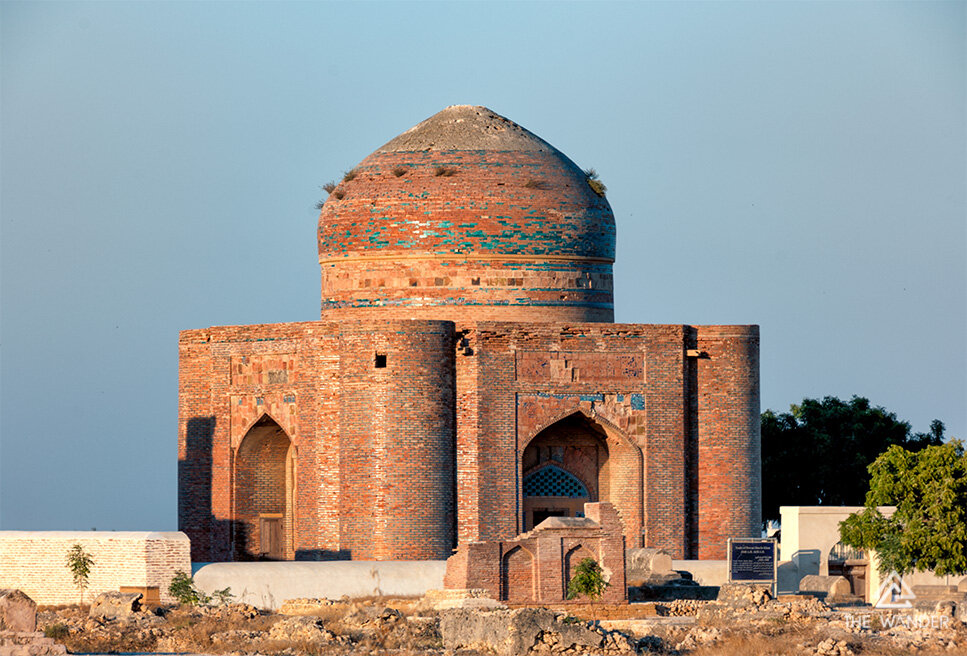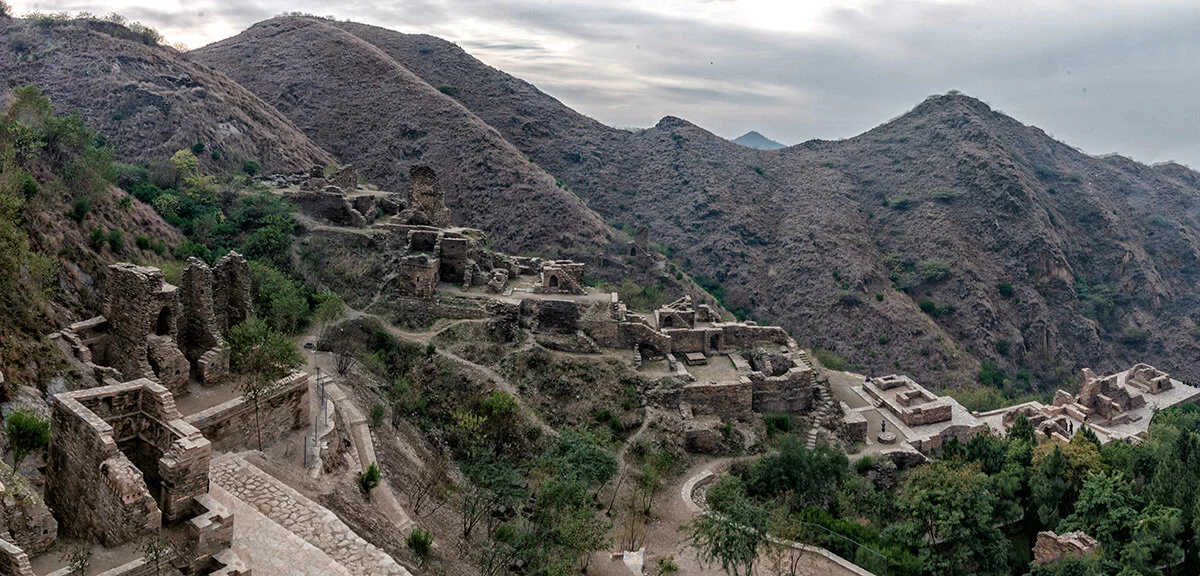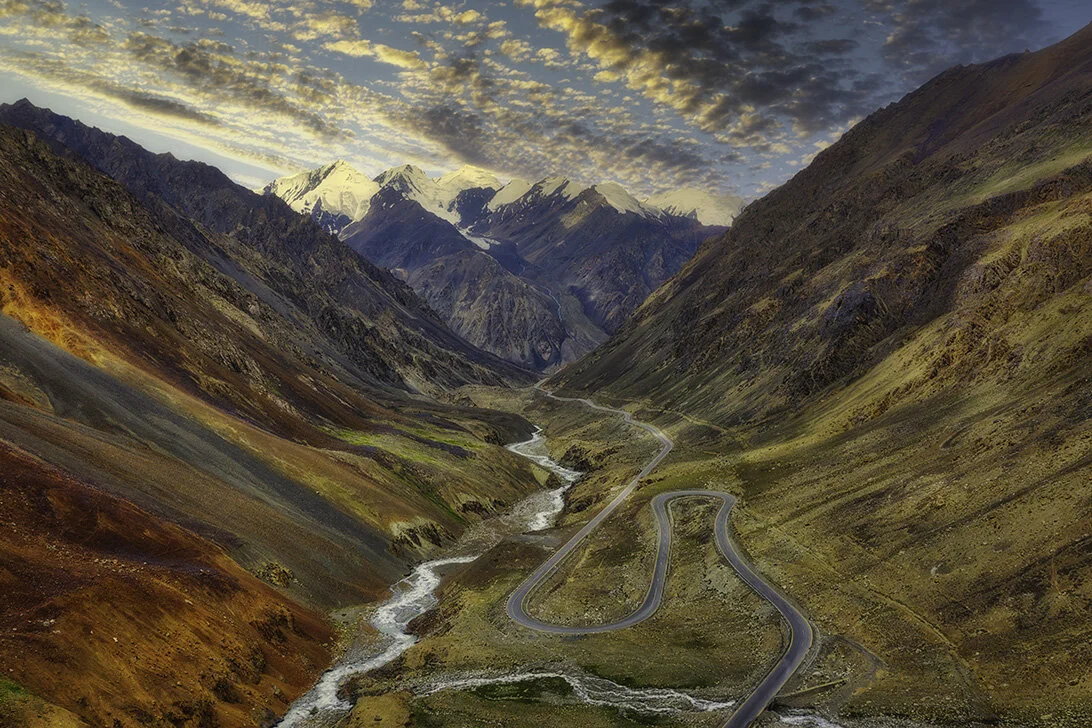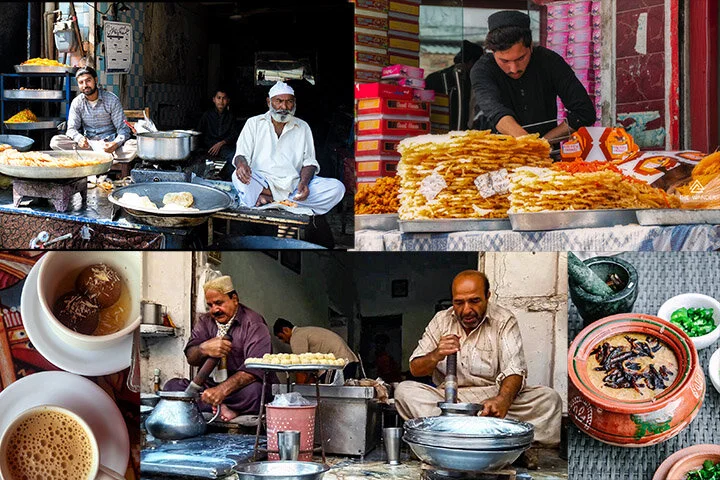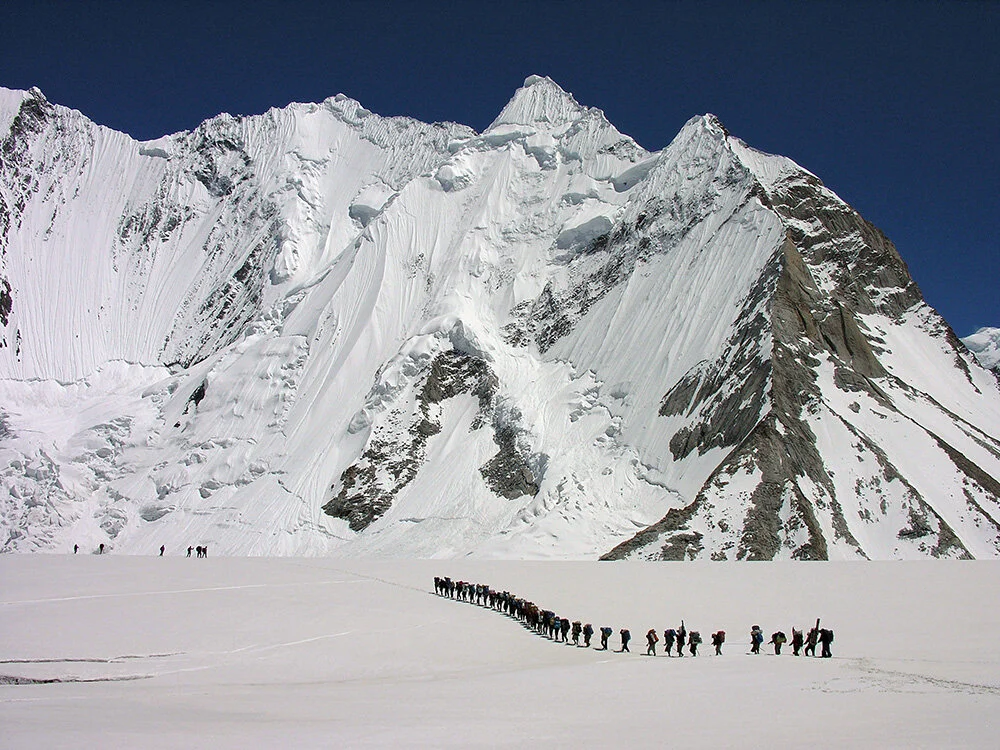
10 Ultimate Experiences in Pakistan
Mountains that will blow your mind; 5,000 years of history, diverse cultures and cuisine. If you are looking for the next big thing, Pakistan might just be what you are looking for.
Sami Ullah
8 min read
Three of the highest mountain ranges come together in Pakistan, making it the highest concentration of high peaks anywhere in the world. The landscape is staggering, you can experience nature in its raw form; it’s a true trekkers paradise. Pakistan is also home to one of the oldest civilizations, the earliest Buddhist monuments, the holiest sites of Sikhism, and some of the best examples of Mughal architecture.
So if you’re interested in exploring Pakistan , here are some of the best adventure experiences for your bucket list.
1. Add a Check on Your Bucket List with the K2 Basecamp Trek
The K2 Basecamp Trek is one of the greatest hikes you’ll ever do. Aptly described as ‘The Throne Room of the Mountain Gods’, Concordia in the Karakoram mountain range has possibly the most spectacular mountain scenery in the world. Ten of the world’s 30 highest peaks rise above the glacier, dominated by K2, the world’s second-highest mountain.
Mohenjodaro Indus Civilization UNESCO World Heritage Site
Takht-i-Bhai Buddhist Monastery UNESCO World Heritage Site
Lahore Fort Complex UNESCO World Heritage Site
Makli Necropolis UNESCO World Heritage Site
Rohtas Fort UNESCO Heritage Site
Taxila Mohra Moradu UNESCO World Heritage Site
2. Visit UNESCO World Heritage Sites
World Heritage Sites are designated by UNESCO for having cultural, historical or other form of significance. Pakistan is currently home to six UNESCO World Heritage sites:
1. Archeological ruins at Moenjodaro, the remains of a 5000-year-old civilization
2. Buddhist ruins of Takht-i-Bahi and the neighboring city remains at Sahr-i-Bahlol. The area of Swat was a major buddhist center and some of the earliest sites of Buddhism are in Pakistan.
3. Mughal Fort and Shalamar Gardens in Lahore. One of the finest examples of Mughal architecture
4. The Necropolis at Makli. Spread over 10 square kilometers, Makli has 500,000 to 1 million tombs built over a period of 400 years
5. The 16th-century Rohtas Fort, known for its large defensive walls, and several monumental gateways.
6. Ancient ruins of Gandhara civilization in Taxila illustrate the different stages in the development of a city on the Indus that was alternately influenced by Persia, Greece and Central Asia and which, from the 5th century B.C. to the 2nd century A.D., was an important Buddhist centre of learning.
Pakistan also has numerous other destinations in the country that are nominated to be registered as UNESCO World Heritage Sites or awaiting nomination. Currently on the tentative list are Deosai National Park which I mentioned above, but also a handful of archaeological sites, historical buildings like mosques, tombs, and forts, and a handful of natural sights. You can see the full list here.

The Ultimate Guide to Exploring Pakistan
A 100% free email course that will teach you everything you need to know about planning an incredible Pakistan trip!
3. Hike to the Basecamp of Mountain of the Gods, King of Mountains, The Naked Mountain: Nanga Parbat
The mountain of many names: Nanga Parbat is the 9th highest in the world. Its name translated to Naked Mountain, the local language refers to the mountain as ‘Diamer’ (meaning ‘Mountain of the Gods’) and in mountaineering circles it’s known as the King of Mountains for its size and magnificent profile. Sometimes Nanga Parbat is even referred to as the Killer Mountain, for the death toll associated with the early expeditions. It’s a tough hike to its basecamp, but it’s actually the easiest hike to the basecamp of an 8,000m peak! Embark on this impressive trek and even opt to trek to camp 1 when you’re in Pakistan
4. Follow in the Footsteps of Ancient Buddhist Pilgrims
All over Pakistan, you’ll find remains of Buddhist monuments, as it was the spiritual center of Buddhism from 200 BC to 800 AD.
From the 1st century BC to the 8th century AD, the Buddhist pilgrim route started from the city of Kashgar and went across the western Karakoram. This trail is open for hikers now.
A Buddhist Trail has been developed to facilitate the monks and foreign tourists. The trail takes you along some twenty Buddhist sites, which contain thousands of Buddhist relics. Follow part of the ancient pilgrim’s path from Ghizer Valley across the Thui Ann Pass to the Chitral Valley, or visit archaeological Buddhist sites while traveling through Pakistan.

Sufi Festival at Shrine of Lal Shahbaz Qalandar

Kalash Winter Festival

Khattak Dance Festival in Khyber Pakhtunkhwa

Shandur Polo Festival

A devotee at Madho Lal Festival Lahore

Festival at Shrine of Madho Lal
5. Experience the Festivals of Pakistan
Pakistan is an amazing blend of diverse cultures. In the high peaks region, every valley has its own language and cultural elements. As a visitor, this means you’ll be able to experience an incredible variety of lifestyles, music, food, and art—and festivals.
In Kalash Valley, the ancient culture still practices its centuries-old religion and way of living. This includes the four-day spring festival of Chilimjusht Festival (or Chilam Joshi). It’s a celebration of spring and also a mating ritual.
The men and women of the Kalash tribes meet with the aim of finding a spouse. Prayers and sacrifices are made for the safety of their fields and animals. This festival is an opportunity to celebrate the beginning of summer and to give a message of peace to the world. It’s one big party with lots of music and dancing.
There are also annual festivals at the largest Sufi shrines, where pilgrims from all over the country participate with hundreds of thousands. There’s group dancing called dhammal, religious songs known as qawwali, and colorful stalls with regional dishes.
The Shandur Pass (also known as ‘The Rooftop of the World’) is home to the world’s highest polo ground, at 3,700m (12,000ft)! The polo ground was established by a Balti prince for traditional polo games, which have been held annually since 1936. The multi-day tournament in July is held between local teams that invite visitors to view the game, along with shows of folk music, dance, and celebration.
6. Discover the New Silk Road
The Karakoram Highway , part of the New Silk Road, is the highest international highway in the world. The highway connects the northern areas of Pakistan to the rest of the country. Following part of the ancient silk roads, the road connects Pakistan to China via the Khunjerab Pass at an altitude of 5,000m (that’s the highest border crossing in the world!).
The highway winds its way through foot hills of Himalayas to Karakoram and Pamir mountain ranges – following one of the ancient silk routes along the valleys of Indus, Gilgit and Hunza rivers to the Chinese border at Khunjerab where it continues to Kashgar on the Chinese side.
The trip from the Himalayan foothills to Khunjerab Pass has stunning landscapes and is an incredible road trip.

The Ultimate Guide to Exploring Pakistan
A 100% free email course that will teach you everything you need to know about planning an incredible Pakistan trip!
7. Eat Your Way Through Pakistan’s Regional Cuisines
As much as language and culture can vary between valleys, so does the cuisine. Each area has their own dishes, and even if they are called the same, they’ll be prepared another way. Don’t miss the opportunity to try every specialty as you travel through the country.
Some of our favorite dishes include halwa puri for breakfast (thin bread with ultra-crispy layers, served with a sweet pudding-like dish and spicy chickpeas), chapshoro (imagine a quesadilla, but filled with (yak) meat and some vegetables), and dowdo, a warm creamy soup filled with wheat noodles and mustard greens perfect for warming oneself after being out in the mountains. Of course accompanied by a cup, or two, of dud pathi—tea made from milk or on a hot day a refreshing glass of Lassi a yogurt drink that is known to put me to sleep.
8. Explore the Magnificent Forts in Pakistan
Known for its spectacular natural wonders, Pakistan is also home to a large number of fortresses. You can find them scattered throughout the country, sometimes along the plains of the Indus river or perched on a mountain top. All of these forts are fantastic sights to behold, and some of the palace-forts have been converted into hotels!
• Rohtas Fort, a UNESCO World Heritage Site built in 1541 by Sher Shah Suri, is a blend of architectural and artistic traditions from Turkey, central Asia, and the Indian sub-continent. The fort was never breached by force and still retains its original character.
• Ranikot Fort, also known as the Great Wall of Sindh, is considered the largest fort in the world.
• Baltit Fort. This is a 700-year-old Fort in Hunza, where the Mir (Hunza ruler) resided until the 1950s.
• Derawar Fort, built in the 9th century, is the best surviving example of this series of historic forts in the Cholistan desert. The best time to see it is in February during the famous Cholistan Desert Rally.
• Shigar Fort. The fort, built in the 17th century by the Raja of Amacha Dynasty of Shigar, has been fully renovated and is used as a hotel. We include a stay in this incredible fort during tours in Skardu.
•Lahore Fort is the citadel in the city of Lahore, located at the northern end of the famous walled city. It's spread over more than 20 hectares and is a remarkable reminder of the glory of the Mughal empire.
• Khaplu Fort is one of the most magnificent 19th-century buildings in Gilgit Baltistan. It's constructed of stone masonry, reinforced with timber members, and rendered in lime plaster. The fort has been restored by the Aga Khan Trust and serves as a luxury hotel. Our K2 Basecamp Tripincludes a stay in this hotel.
• Bala Hissar Fort was once used as a royal winter residence for the Duranni Empire. The fort, located in Peshawar, has been completely renovated and is currently in use by the Pakistani Army.
If you're interested in learning more details about Pakistan's forts, take a look at this blog post.

The Ultimate Guide to Exploring Pakistan
A 100% free email course that will teach you everything you need to know about planning an incredible Pakistan trip!
9. Make Your Mark in the World of Mountaineering
It’s always a special occasion whenever you reach a goal, whether that’s summiting your dream mountain, going above 6,000m for the first time or leading a new route. In Pakistan, it is possible to really leave your mark in the climbing world.
While the crown for the first K2 winter summit is taken; there are still many unclimbed and unnamed peaks over 6.000m in Pakistan that may satisfy your summit fever. Be the first to summit one for a once-in-a-lifetime experience and have that mountain named after you!
These are specialized expeditions for mountaineers. We provide all support, from permits, to logistics, high altitude porters and expert mountaineering guides to help you achieve your mountaineering goals.
10. Visit the Second-highest Plateau in the World
With an average elevation of 4,114m (13,497ft), Deosai National Park is the second-highest plateau in the world. Himalayan and Karakoram-Pamir highlands merge at Deosai, creating high altitude wet plains, including the beautiful Sheosar Lake.
The high-altitude alpine plateau has rolling pasture land with remarkable biodiversity. There are several 5,000m trekking peaks, on your trek you will cross paths with marmots and if you are lucky an Himalayan Ibex. Sheosar Lake is awe-inspiring and in spring, the plateau is covered with wildflowers attracting all kinds of butterflies.
Copyright 2020 The Wander Adventures

The Ultimate Guide to Exploring Pakistan
A 100% free email course that will teach you everything you need to know about planning an incredible Pakistan trip!






